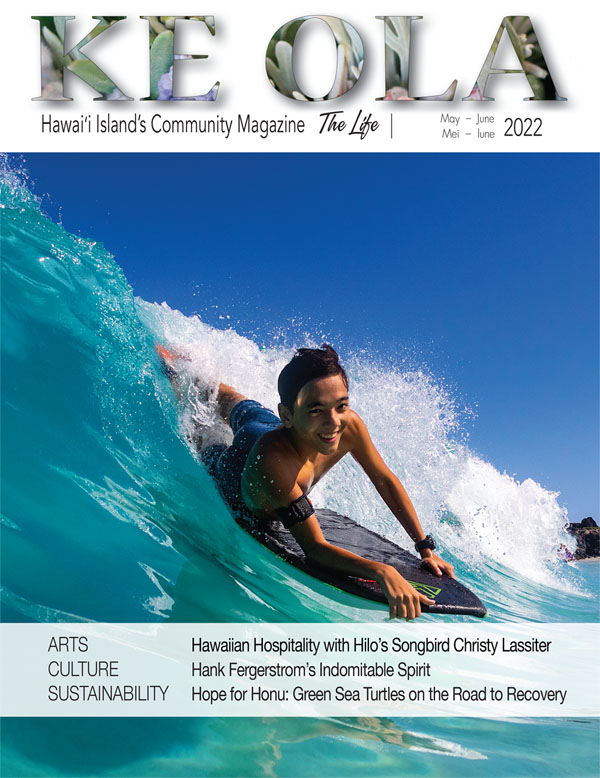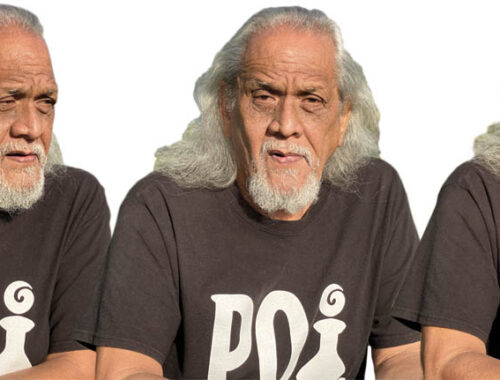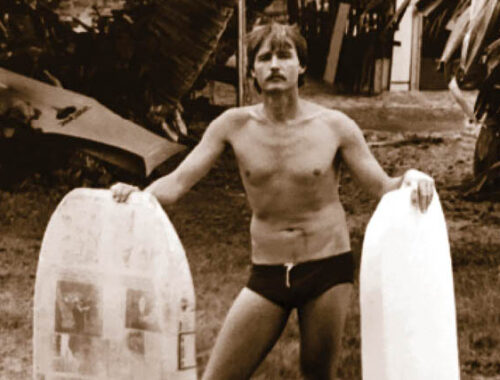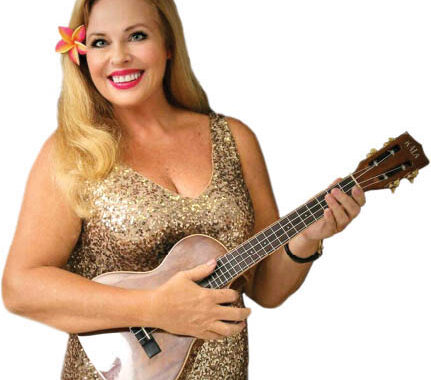
Battered by Life, the Rescued Livestock at FPG Have Found Sanctuary
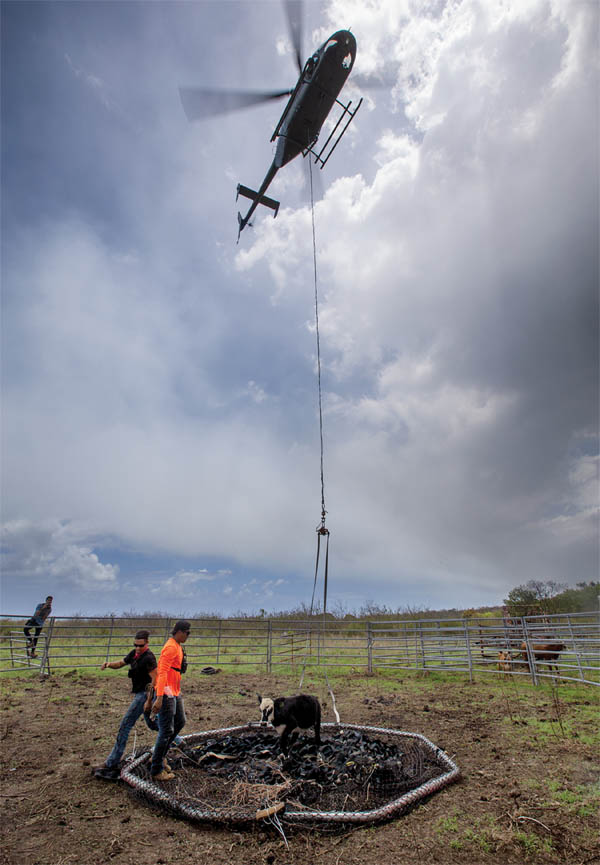
By Stefan Verbano
Eve the sheep lived an action-packed life before coming to the sanctuary. She spent her early years frolicking through green pastures of her lower Puna homestead, until her peaceful existence was shattered in 2018 by the massive volcanic eruption. Suddenly, she found herself living on the run while the earth shook, lava bombs exploded, and half the sky glowed red at night.
Then there was the fateful moment when a helicopter appeared from over the smoky horizon, loaded her into its dangling harness, and flew her—flailing, terrified, and exhausted—out of the lava zone and into the caring hands of the Hawai‘i Lava Flow Animal Rescue Network. Without a doubt they saved her life.
Then came the livestock trailer, the veterinarian, and the staging area full of other farm animals saved during the same mission. Eve made friends with three other helicopter-rescued sheep, two of which were so badly burned on their backs from the eruption’s falling hot ash that, sadly, they didn’t survive.
All four were brought, with little advance notice, to the Fellowship for Perpetual Growth (FPG)—a 20-acre teaching farm and animal sanctuary built on old sugarcane land in the rolling hills above Mountain View on Kīlauea Volcano’s eastern flank. Here, in grassy fields dotted by stands of strawberry guava and bordered by young forests of ‘ōhi‘a trees, Eve and the other survivor, Caleb, a ram, lazily graze away their days, nap in the cool shade of the fenced pasture’s solitary coconut palm, and socialize with the throngs of other rehabilitated farm animals wandering the property—from pigs and chickens to donkeys, turkeys, ducks, and goats.
“Eve and Caleb didn’t have any burns on them,” sanctuary co-founder Rob Cole says about their arrival. “They were the healthier two sheep out of the four. Eve was really skittish at first, and Caleb was too, to a lesser extent. They were both very scared, untrusting. They wouldn’t even come near you.”
Although Eve and Caleb seemed to have fared well physically, they were clearly emotionally traumatized from the whole ordeal, and Rob had to start from square one in helping them feel safe around humans again.
“The first couple of weeks I’d just lay food down in their trough and walk away,” Rob recalls. “They’d come over to investigate—always Caleb first, and then if he was alright, the other sheep would follow him and stick together. Just by giving them food regularly, that won their trust.”
Now, nearly four years later, both sheep have made tremendous progress toward getting back to their happy, carefree selves.
“Now I’m able to get close enough to Eve to put a leash on her,” Rob says. “Once I’m in her presence, I’m able to rub her nose and ears. She loves the face rubs.”
Eve can still get nervous around strangers, though, while Caleb has recovered to the point that he’s friendly and inquisitive, even nosy.
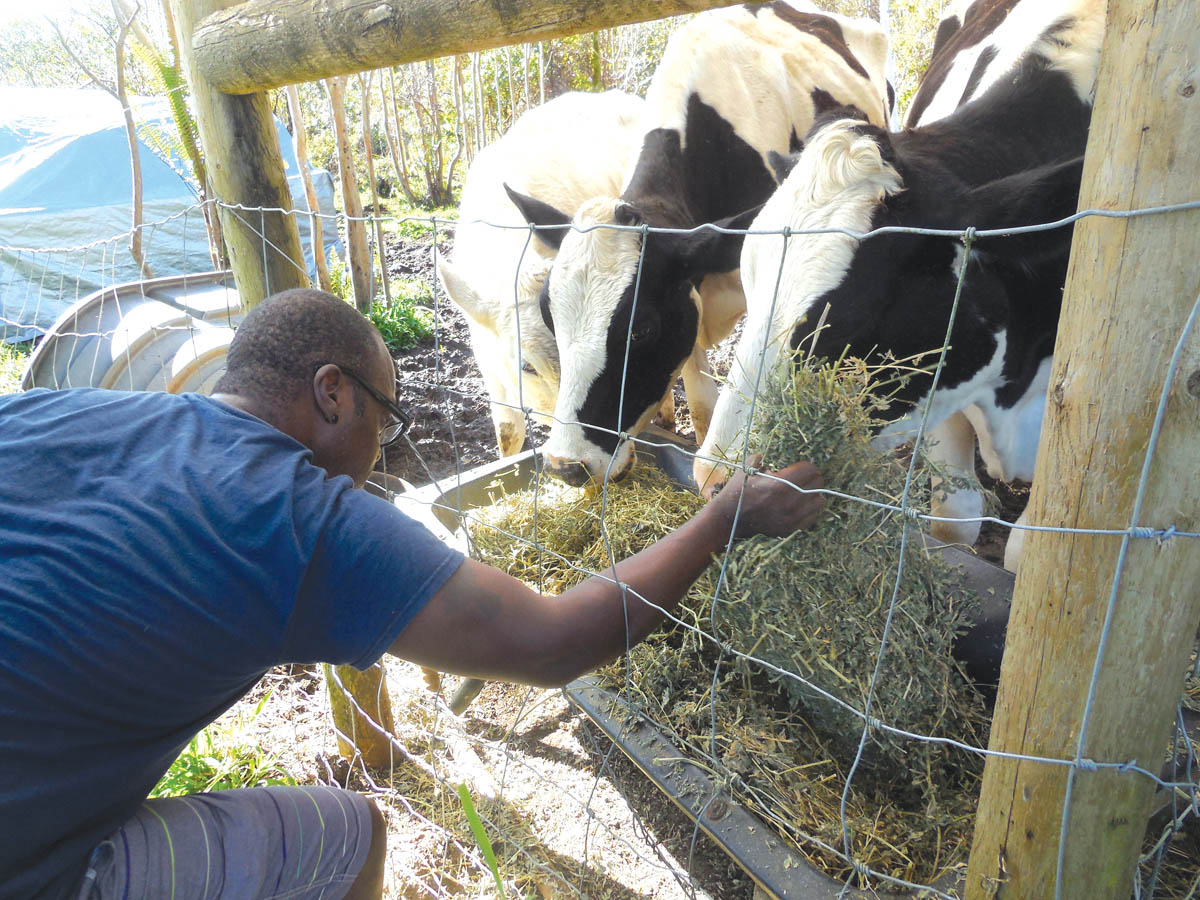
The Rest of the ‘Ohana
The majority of the sanctuary’s livestock residents, numbering between 50 and 60, not including the birds, are lava flow evacuees like Eve and Caleb. Others were rescued from defunct commercial farms, such as the retired milk cows Maria and Olena. They are beautiful Holsteins, patterned with the iconic black-spots-on-white, and arrived at the sanctuary in 2019 when Big Island Dairy, Hawai‘i’s last commercial dairy operation, was forced to shut down due to improper waste management. Most of its herd of more than 2,800 milk cows were set to be slaughtered, and that’s when the Animal Rescue Network—a volunteer organization of Hawai‘i Island animal lovers that began as a humble Facebook group—ramped up once again and came to their rescue.
Other animals came from abusive farms, like two of the sanctuary’s donkeys: Eddie and Flo. They were originally from a hobby ranch along the Hāmākua Coast, and their former owners put them up for adoption in order to concentrate on their horses. Flo and Eddie’s previous “farrier,” a type of livestock craftsperson specializing in trimming hoofs, had physically abused them with his tools, and so were implacable when the sanctuary’s newfound farrier came to care for them.
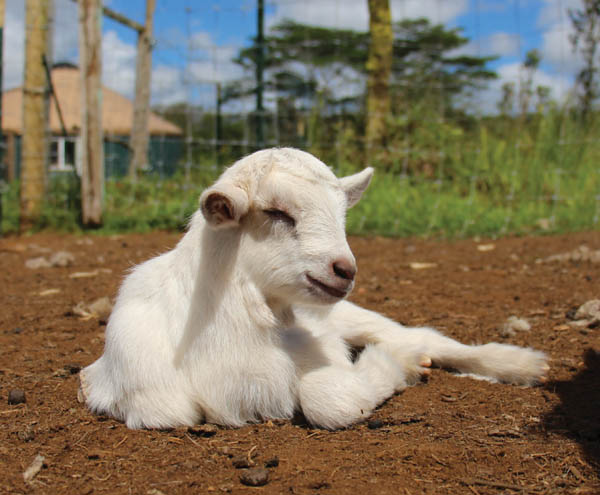
“Our guy came down, and the first time meeting the donkeys they shook,” Rob says. “They trembled when he touched his tools. The donkeys told us they had been abused by the other farrier, there’s no question, no doubt in my mind based on the way they reacted.”
Progress was slow. The new farrier worked very gently and mindfully, and earned their faith with handfuls of alfalfa cubes. He’d come every six weeks, and during the first session the donkeys would only give up one or two hoofs to be trimmed.
“He’d win their trust more and more, and within four sessions he was able to trim every hoof,” Rob remembers. “It was just amazing to see how these animals can learn to trust us again after people have shown them that there are some of us who can’t be trusted. They’re still willing to have hope for us that there are good people out there willing to take care of them.”
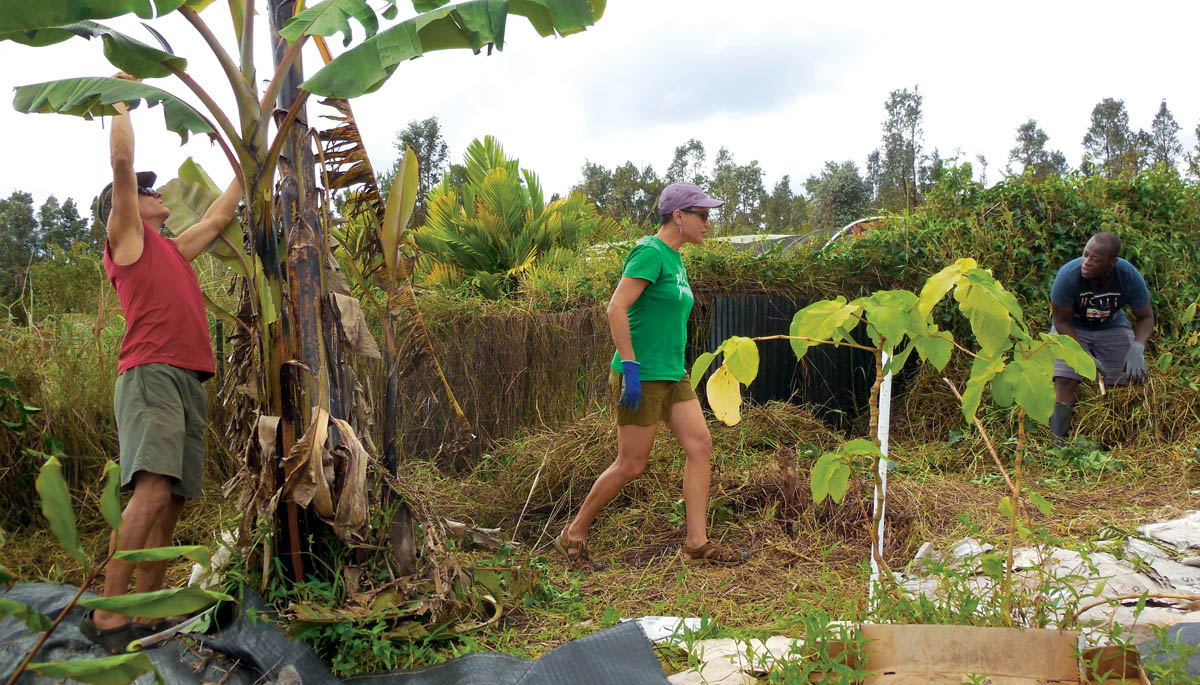
FPG’s Start
The Fellowship for Perpetual Growth was founded as a community-focused nonprofit in 2016 by Rob and two friends: Sonja, an animal lover, and Ken, a permaculturist. Rob rounded out the group with his past experience as an IT specialist and computer program manager, transferring his organizational skills and eye for efficiency from technological systems to agricultural systems.
Tragically, Sonja passed away in 2016 after the land was purchased but before boots were on the ground. The next year was spent surveying and gathering data about rain and wind patterns, as well as sun exposure and soil drainage. They started earth-moving in the beginning of 2018, and just a few months later volcanic fissures began to explode in Leilani Estates. In that moment, besides its two large yurts and shipping container barn, the sanctuary had little infrastructure set up for animals.
“Since we’re a nonprofit, our duty is to the community, and what the community needed in that moment was to rescue these animals,” Rob says. “A lot of people could rescue, you know, foster dogs and cats in their home, that’s not a problem. But there were a lot of farm animals that needed help, too, so we cobbled together some fencing and makeshift shelters and we took in as many animals as we could house as quickly as we could.”
The scene was hectic. Sanctuary staff and community volunteers worked long days with few resources, slapping together old shipping pallets and lengths of cast-off corrugated metal roofing. Even today the haphazard nature of the original livestock structures can still be seen in their sagging roofs and walls that are clearly not square, although the animals don’t seem to mind.

Enter James
It’s 9am and James Myers pulls the breakfast wagon down the bumpy gravel driveway. The animals, most of them grouped into their respective paddocks, see him coming and start their excited chatter. In the wagon there’s hay for the cows, grain for the donkeys, table scraps for the pigs, and feed for the birds, all in plastic bins and old metal stock pots stacked up to a precarious height.
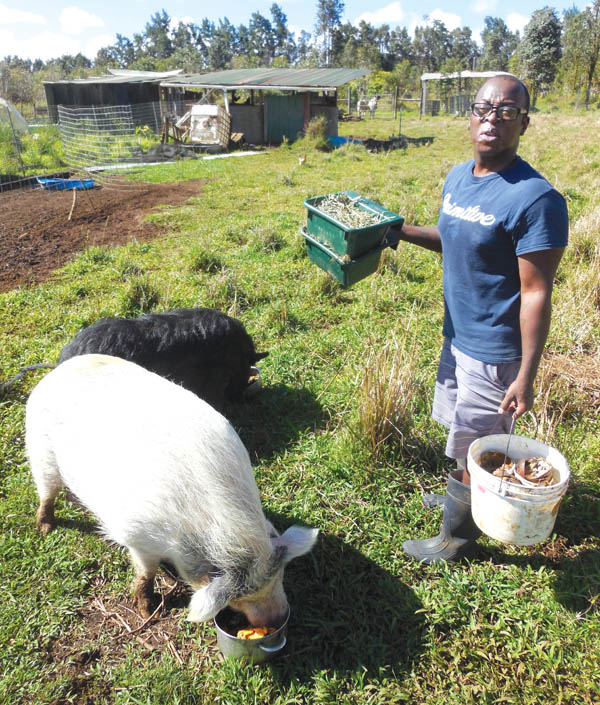
James has been the primary animal caretaker at the sanctuary since October 2021, and before that he was one of its many volunteers. Tragedy had struck again when another founding member, Ken, passed away, leaving Rob to continue the vision alone. After applying for and landing the job, James moved into Ken’s vacant yurt, graduating from casual volunteer to land-partner.
“I think animals are naturally attracted to me,” James says. “They always want to be around me. Living here feels very resonant with who I am—this place is so wide and spread out, the sky is open and the land is beautiful.”
Feeding the donkeys is James’ favorite part of the twice-daily chores. “They make it so easy to love them,” he says. “They just have so much personality, it makes it really enjoyable to be around them.”
James finishes his rounds and gets ready for the volunteers to arrive. The sanctuary hosts work days once a month when community members can come and contribute. The influx of new faces makes Eve more skittish than normal, and she shies away from the food trough as Caleb happily chomps away. Rob comes into the pasture and squats down with a handful of feed in his outstretched arm. Her eyes light up, and she nervously takes two steps forward and one step back. Slowly she inches closer as Rob gently calls her name. Next her muzzle is buried in his palm, her anxiety is quelled, and his other hand sneaks up to rub her head.
This is a snapshot of the sanctuary’s greatest aspiration: to take in a farm animal like Eve, who’s been battered by life, made to live in fear and traumatized by a harrowing ordeal, and over the months and years help her heal and muster the courage to eat out of a cupped hand. The work is hard and their progress is sometimes slow, but to see her in moments like this makes it all worth it. ❖
For more information: fpgsanctuary.org
